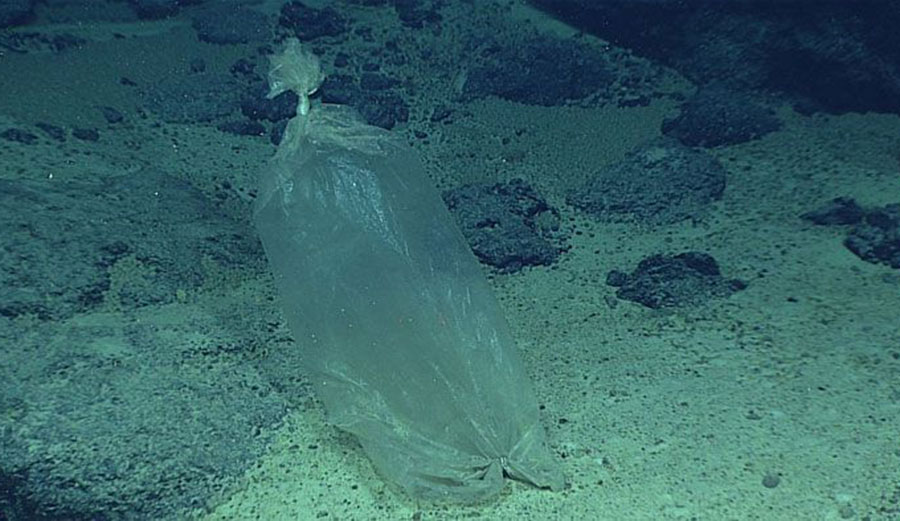Not all scientific research begins with specific intent. In the late 1980s and early 1990s, as ocean scientists embarked on an ambitious plan to understand the potential impacts of deep-sea mining by simulating the disturbance caused by removing polymetallic nodules from the seafloor, they inadvertently seeded an entirely different experiment, which would ultimately provide insight into an environmental crisis that had not, at the time, been identified.
Scientific expeditions are not without their own environmental impacts, a phenomena that has been recognized by the deep-sea research community. Hydrothermal vent scientists acknowledged the potential harm that scientific research can impose upon deep-ocean ecosystems and adopted the InterRidge’s Code of Conduct on responsible behaviour at hydrothermal vents which has been implemented by other deep-ocean research teams. While many of these harms relate to direct impacts to the seafloor, the presence of a ship on station, and the intermittent rain of refuse, especially in the early day of deep-sea exploration, also leaves a mark.
Some of those impacts can lead to opportunities. In 2015, during the most recent survey of the DISCOL disturbance area to assess long-term impacts of polymetallic nodule mining on the abyssal plain, scientists from GEOMAR, as well as other German research institutions, recovered several large pieces of plastic trash from the seafloor. This in itself, is not uncommon. Plastic trash is observed on nearly every deep sea dive, from Antarctica to the bottom of the Mariana Trench. What was unusual is that the researchers were able to track the trash back to the source. Labeling on a lid and identifying marks on a plastic bag and an aluminum can allowed the team to determine not only approximately when the trash was deposited, but from which vessel–it was waste that made its way overboard during previous DISCOL surveys.
In “Persistence of plastic debris and its colonization by bacterial communities after two decades on the abyssal seafloor”, researchers recovered the plastic lid of a box of curds and a plastic bag containing an aluminum can, the markings on which clearly connected this refuse with earlier cruises of the RV Sonne. Due to their location and the known route of the vessel, they were able to determine that the trash sunk quickly and that the microbial communities accumulated at the seafloor, rather than during a prolonged journey through an oceanic gyre, and that their breakdown was not accelerated by UV degradation from the sun.
Once equipped with a date range, Krause and colleagues were able to assemble a timeline for the colonization and degradation of plastic in the deep sea, assessing microbial growth on plastic trash over a 2 decade period. This may well be the longest deep ocean plastics time series to date.
The plastic was covered in a mature microbial biofilm that had likely remained stable since the trash reached the seafloor and whose density was consistent with ocean plastics recovered from other ecosystems. The microbial community growing on these two items showed markedly lower biodiversity than that of the surrounding seafloor and was characterized by taxa that require steep reduction-oxidation gradients to thrive. Unsurprisingly, the cohort colonizing these fragments of plasticine debris was unlike those found growing on polymetallic nodules and other natural surfaces in the DISCOL area.
Most concerning was the discovery that, after more than two decades, the plastic showed no signs of decomposition. This, coupled with the unique microbial communities that form on the discarded waste, presents the worrying potential for localized oxygen depletion at the seafloor around concentrated plastic falls. For deep-sea mining contractors, who may operate large vessels for prolonged periods over a relatively small area of the seafloor, these results provide one more potential environmental impact for miners to be aware, as well as an opportunity to investigate potential environmental offsets in the form of recovering plastic waste from the seafloor during operations.
This study highlights one of the tertiary benefits of deep-sea mining exploration–the deep sea is still a vast unknown, which means any research expedition has the potential to yield new and novel discoveries, some of which may be entirely unrelated to deep-sea mining or its environmental impact. Beyond the mineral wealth, deep-sea mining, and in particular the environmental studies which accompany any exploration program, offer a tremendous opportunity for discovery. This study also highlights the potential unintentional harms that could occur as a result of sustained human presence on the deep abyssal plains.
Featured Image: Plastic items used for the present study. Left: station 198, curd box with lid and two adjacent manganese nodules; right: station 213, plastic bag with aluminum can (inlet). Scale bars approx. 10 cm. Seafloor images taken by GEOMAR ROV KIEL 6000; Inlay image provided by Dr. M. Haeckel, GEOMAR.


